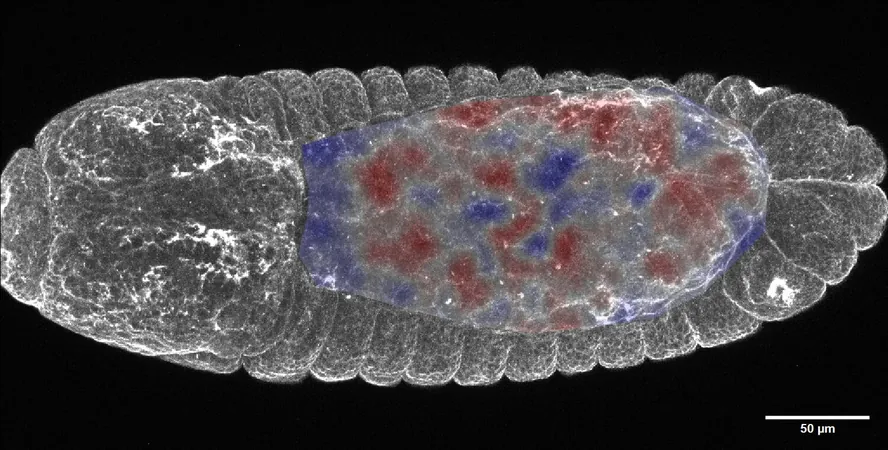
Revolutionary Study Uncovers How Embryos and Hearing Cells Share Communication Secrets!
2025-07-03
Author: Wei
In a groundbreaking study, scientists have unveiled a remarkable link between embryonic cells and hearing mechanisms, revealing that both utilize the same communication proteins due to their shared evolutionary history.
Researchers from the Göttingen Campus Institute for Dynamics of Biological Networks (CIDBN), Max Planck Institute for Dynamics and Self-Organization, and the University of Marburg have shed light on how cells within an embryo coordinate their actions. This intricate process involves molecular mechanisms once thought exclusive to hearing.
The Dance of Cells: Coordination in Embryonic Development
Complex organisms, including humans, begin as a single cell that divides and multiplies through a fascinating journey of growth and coordination. The research team employed a mix of developmental genetics, brain research, auditory studies, and theoretical physics, leading to a stunning discovery about cell communication. In thin layers of skin, cells not only sense movements of their neighbors but also synchronize their own movements to create a more powerful collective force.
Thanks to their heightened sensitivity, these cells can engage rapidly and flexibly. This ability to communicate is crucial; when cells were genetically modified to eliminate their "listening" capability, it resulted in severe developmental issues, proving that their coordinated dance is vital for proper embryonic formation.
AI-Powered Insights into Cellular Interactions
By integrating cellular coordination into advanced computer models, the researchers demonstrated how the whispers of neighboring cells create a cohesive choreography that protects tissue from external disturbances. "Using AI methods and computer-assisted analysis, we examined about a hundred times more cell pairs than what was previously achievable," said Dr. Matthias Häring, a key figure in the study. This innovative big data approach has granted researchers unprecedented accuracy in understanding delicate intercellular interactions.
From Hearing to Development: A Shared Evolutionary Path
Interestingly, the mechanisms linked to embryonic development were previously recognized for their role in hearing. In our ears, hair cells that convert sound waves into nerve signals respond to minute mechanical movements. These cells are capable of detecting vibrations measuring mere atomic distances due to specialized proteins that transform mechanical forces into electrical signals.
The discovery that such force-sensitive proteins play a crucial role in embryonic development is revolutionary. Professor Fred Wolf, one of the study's authors, remarked that the origins of these proteins trace back to our single-celled ancestors, which shared genes with fungi long before animal life evolved. He notes that the true diversity of these proteins began with the advent of the first animals.
The Future of Cellular Communication Studies
As research continues, scientists aim to explore whether these cellular "nanomachines" originally served to sense internal forces within organisms—a foundational aspect of life—rather than, as in hearing, to perceive external stimuli. This exciting revelation opens new avenues for understanding both embryonic development and evolutionary biology.


 Brasil (PT)
Brasil (PT)
 Canada (EN)
Canada (EN)
 Chile (ES)
Chile (ES)
 Česko (CS)
Česko (CS)
 대한민국 (KO)
대한민국 (KO)
 España (ES)
España (ES)
 France (FR)
France (FR)
 Hong Kong (EN)
Hong Kong (EN)
 Italia (IT)
Italia (IT)
 日本 (JA)
日本 (JA)
 Magyarország (HU)
Magyarország (HU)
 Norge (NO)
Norge (NO)
 Polska (PL)
Polska (PL)
 Schweiz (DE)
Schweiz (DE)
 Singapore (EN)
Singapore (EN)
 Sverige (SV)
Sverige (SV)
 Suomi (FI)
Suomi (FI)
 Türkiye (TR)
Türkiye (TR)
 الإمارات العربية المتحدة (AR)
الإمارات العربية المتحدة (AR)